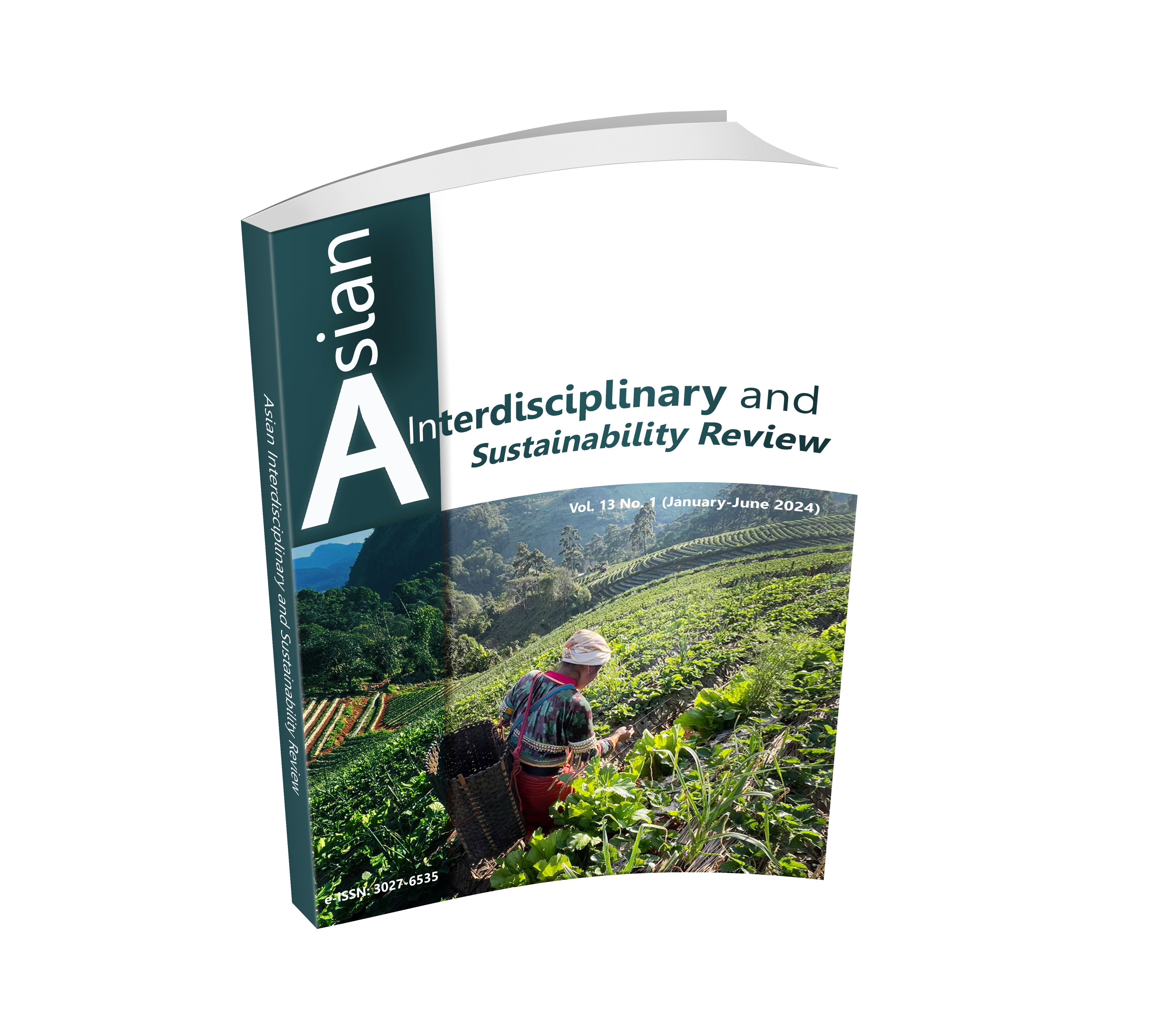DEVELOPMENT OF DATA CLASSIFICATION OF LOCAL HERBS IN BETONG, THAILAND
DOI:
https://doi.org/10.14456/aisr.2024.2Keywords:
Natural Language Processing, Machine Learning, Data Classification, Keywords ExtractionAbstract
This research focuses on the development of an application named "Piyamit Herb," dedicated to preserving herbal information in the Thai language within Betong, Yala, Thailand. The primary objectives of the application are to digitize information previously conveyed verbally within the Piyamit Community in Betong, ensuring its accessibility to interested parties and the younger generation. The application also serves to systematically store this information, alleviating concerns about its potential loss over time. Additionally, it aims to foster a sense of ownership of local learning resources within the community. The Piyamit Community boasts a rich repository of indigenous herbs used in traditional medicine. Consequently, there is a need for classifying these local herbs to facilitate learning and usage. The development of the application incorporates ontology, a technology that facilitates the linking of lexical search and categorization of information. Furthermore, Natural Language Processing theory in the Thai language, text classification, and machine learning technologies are applied. As a result, Piyamit Herb has been successfully developed as a comprehensive system for storing and presenting data in Betong, Thailand. The application addresses the imperative to preserve information shared orally by local elders, ensuring the transmission of valuable knowledge passed down from their ancestors.
Downloads
References
Ahmad, R., Riaz, M., Khan, A., Aljamea, A., Algheryafi, M., Sewaket, D., & Alqathama, A. (2021). Ganoderma lucidum (Reishi) an edible mushroom; a comprehensive and criti-cal review of its nutritional, cosmeceutical, mycochemical, pharmacological, clinical, and toxicological properties. Phytotherapy Research, 35(11), 6030-6062.
Anaya, M., Tibaduiza, D., & Pozo, F. (2017). Detection and classification of structural changes using artificial immune systems and fuzzy clustering. International Journal of Bio-Inspired Computation, 9(1), 35-52.
Bharti, S., Babu, K., & Jena, S. (2017). Automatic Keyword Extraction for Text Summariza-tion: A Survey. Retrieved from https://arxiv.org/abs/1704.03242.
Jang, B., Kim, M., Harerimana, G., Kang, S., & Kim, J. (2020). Bi-LSTM Model to Increase Accuracy in Text Classification: Combining Word2vec CNN and Attention Mecha-nism. Applied Sciences, 10(17), 5841.
Jurisch, M., Böhm, S., & James-Schulz, T. (2020). Applying Machine Learning for Automatic User Story Categorization in Mobile Enterprises Application Development. Interna-tional Journal of Interactive Mobile Technologies, 14(15), 81-94.
Kurnia, R., Tangkuman, Y., & Girsang, A. (2020). Classification of User Comment Using Word2vec and SVM Classifier. International Journal of Advanced Trends in Comput-er Science and Engineering, 9(1), 643-648.
Liang, C., Tian, D., Liu, Y., Li, H., Zhu, J., Li, M., Xin, M., & Xia, J. (2019). Review of the molecular mechanisms of Ganoderma lucidum triterpenoids: Ganoderic acids A, C2, D, F, DM, X and Y. European Journal of Medicinal Chemistry, 174, 130-141.
Nasar, Z., Jaffry, S., & Malik, M. (2019). Textual keyword extraction and summarization: State-of-the-art. Information Processing & Management, 56(6), 102088.
Nokkaew, K., & Kongkachandra, R. (2018). Keyphrase extraction as topic identification using term frequency and synonymous term grouping. A paper presented at the 2018 Inter-national Joint Symposium on Artificial Intelligence and Natural Language Processing, Pattaya, Thailand.
Saelim, K., & Kongkachandra, R. (2017). Semantics-based topic identication for keyphrase extraction. A paper presented at the 12th International Conference on Knowledge, In-formation and Creativity Support Systems, Nagoya, Japan.
Saelim, K., Luangwiriya, T., & Kongkachandra, R. (2019). Using Conceptual Graph to Rep-resent Semantic Relation of Thai Facebook Posts in Marketing. A paper presented at the 14th International Joint Symposium on Artificial Intelligence and Natural Lan-guage Processing, Chiang Mai, Thailand.
Sharma, A., Chaurasia, S., & Srivastava, D. (2020). Sentimental Short Sentences Classifica-tion by Using CNN Deep Learning Model with Fine Tuned Word2Vec. Procedia Computer Science, 167, 1139-1147.
Siddiqi, S., & Sharan, A. (2015). Keyword and keyphrase extraction techniques: a literature review. International Journal of Computer Applications in Technology, 109(2), 18-23.
Tapsai, C., Meesad, P., & Unger, H. (2019). An Overview on the development of Thai natural language processing. Information Technology Journal, 15(2), 45-52.

Downloads
Published
How to Cite
Issue
Section
License
Copyright (c) 2024 Authors

This work is licensed under a Creative Commons Attribution-NonCommercial-NoDerivatives 4.0 International License.











.png)


